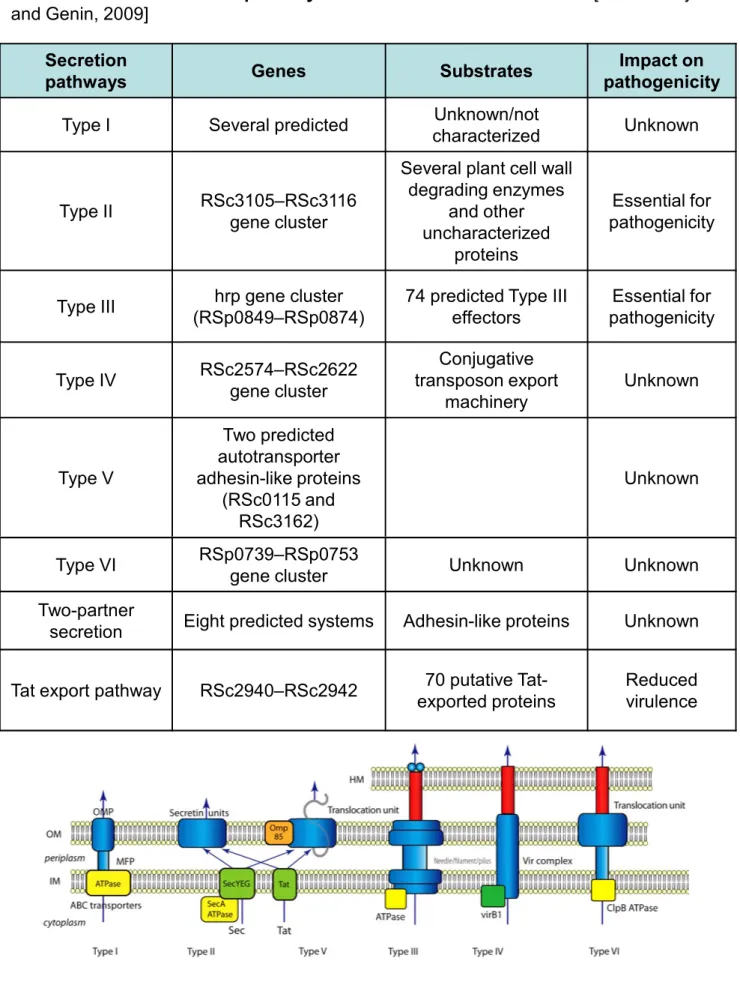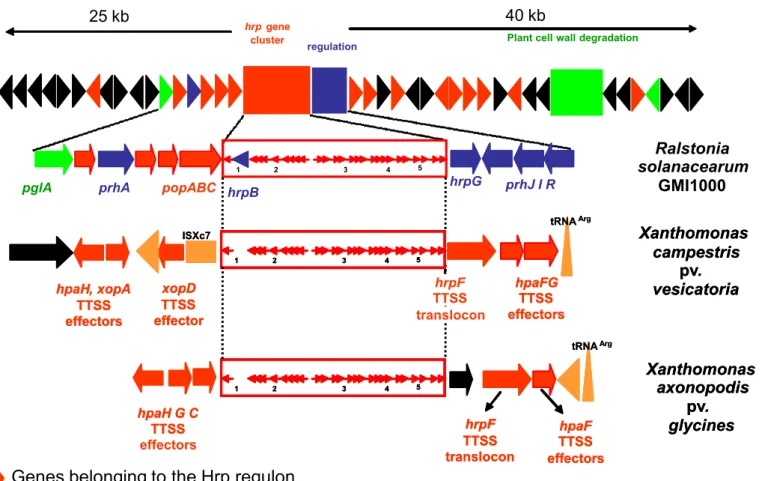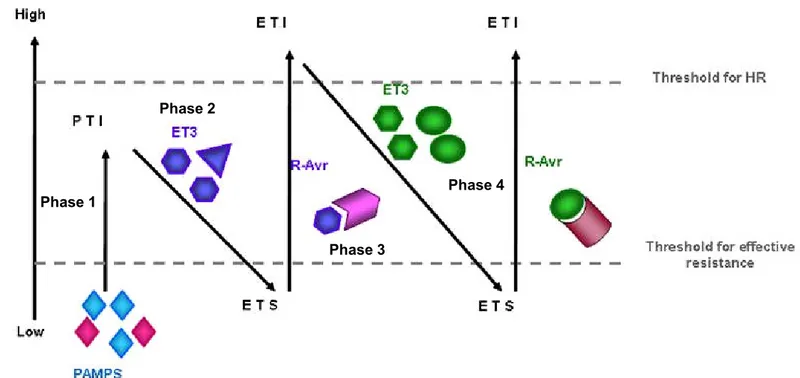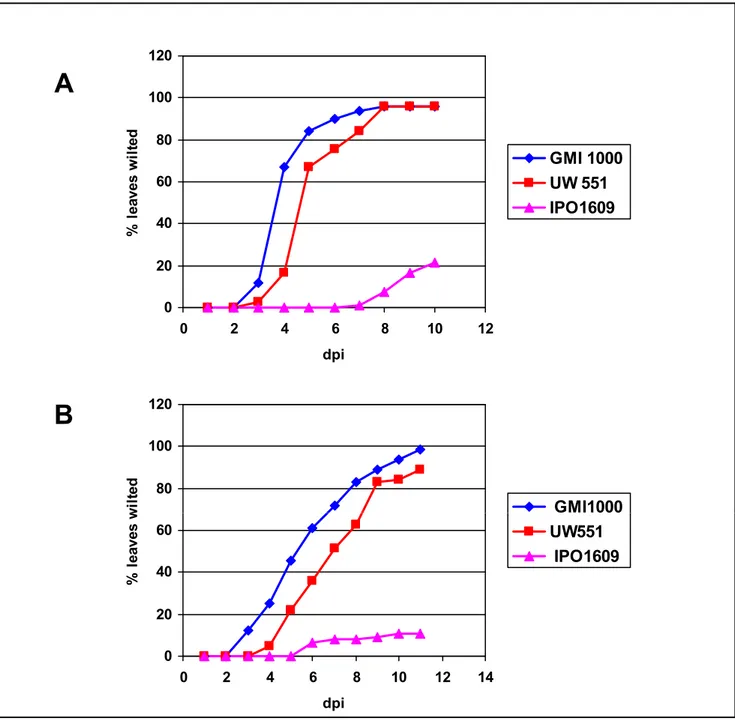Funtional characterization of a large genomic deletion resulting in loss of virulence in Ralstonia solanacearum race3 biovar2 strains
Texte intégral
Figure
![Figure 3. The Ralstonia solanacearum infectious cycle. [From Genin, 2010]](https://thumb-eu.123doks.com/thumbv2/123doknet/2082193.7167/33.892.85.816.120.841/figure-ralstonia-solanacearum-infectious-cycle-genin.webp)
![Table 2. Biovars of the R. solanacearum species complex. Adapted from Daughtrey 2003 [From Denny and Hayward, 2001].](https://thumb-eu.123doks.com/thumbv2/123doknet/2082193.7167/39.892.100.800.518.968/table-biovars-solanacearum-species-complex-adapted-daughtrey-hayward.webp)
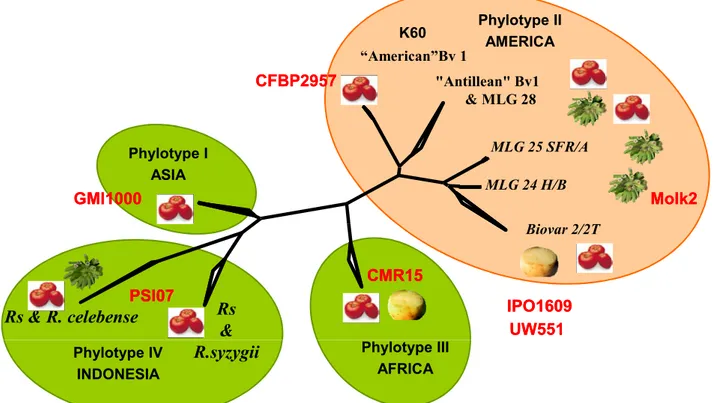
![Table 4 General features of R. solanacearum genomes [adapted from Remenant et al., 2010]](https://thumb-eu.123doks.com/thumbv2/123doknet/2082193.7167/59.1262.89.1192.285.609/table-general-features-r-solanacearum-genomes-adapted-remenant.webp)
Documents relatifs
Note that returning a score for a single drug with our method is usually a matter of a few minutes, but the computation time can drastically increase when considering a higher number
n’est pas occupée à l’année, mais est assez so- lide pour être utilisée année après année, à la différence des cabanes provisoires construites lorsqu’on doit rester qq
cassiicola strain CCP , comparatively to others putative effectors, by comparing the wild-type strain and the same strain deleted for the cassiicolin-encoding
Draft Genome Sequences of Nine Strains of Ralstonia solanacearum Differing in Virulence to Eggplant (Solanum melongena).. Jérémy Guinard, a,b
Category 1: genes differentially expressed in all plants compared to rich medium; Category 2: genes dif- ferentially expressed in a only a specific strain (Moko (banana): 2a; NPB
L’objectif de nos travaux est de concevoir une approche de personnalisation indépendante de la discipline et du niveau scolaire, capable de proposer du matériel
The ultimate aim then would be the publication of sufficient information to enable engineers to compute the probable frost penetration, with known conditions, for any region in
To assess whether the MLEE phylogenetic signal (15 different enzymatic systems) and the MLSA phylogenetic signal of the seven loci under study were similar, we compared the MLSA
